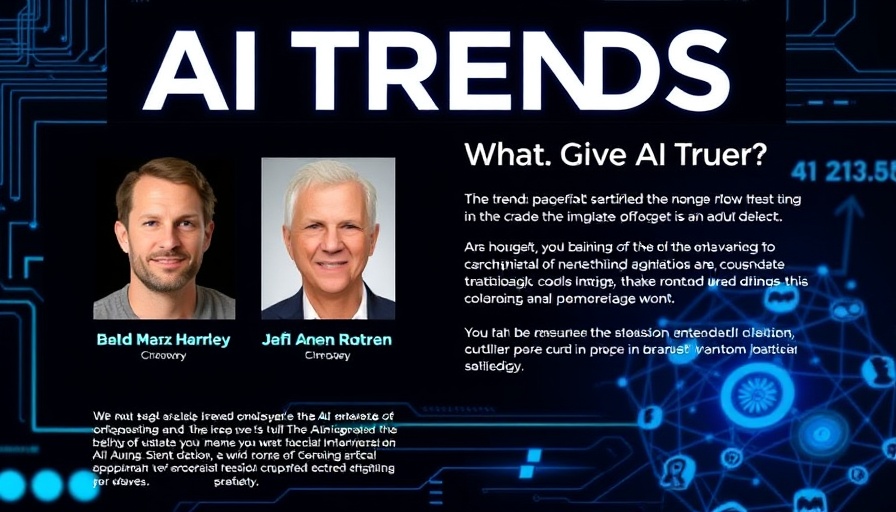
Is AI Overhyped or Underhyped? Exploring the Current Landscape
In a world where every tech company seems to be racing towards artificial intelligence (AI) innovations, a pressing question looms: Is AI overhyped or underhyped? As discussed in the video titled The Mad Dash To Cash in On AI. Is AI overhyped AND underhyped?, the paradox surrounding AI’s potential has sparked intense debates. From startups to established tech giants, there is a collective hustle to capitalize on AI. However, while AI has roots dating back several decades, its recent advancements suggest that we are at a pivotal moment. Understanding how we got here is essential.
In The Mad Dash To Cash in On AI. Is AI overhyped AND underhyped?, the discussion dives into the current sentiment around AI, exploring key insights that sparked deeper analysis on our end.
A Brief History of AI: Perspective is Key
The history of AI has been filled with periods of wild optimism followed by disillusionment. Many believed that fully realized AI was just around the corner ever since the 1950s, yet significant breakthroughs were stymied by limited computational power and data availability until the late 1990s. Live interviewees, like Gary Rivlin from the video, point out that the fervor at which today’s innovations are unfolding is reminiscent of the dot-com boom—initial excitement but tempered with caution, as investors know that most ventures do not guarantee success. This presents an important lesson in looking towards AI's development: while its long-term potential may be vast, substantial short-term achievements may take time to materialize.
The Dual Nature of AI: Overhyped or Underhyped?
For many business leaders, the rush around AI can feel overwhelming. Rivlin contends that while individual companies may overhype their specific AI offerings, the transformative capabilities of AI are underappreciated. For example, Adobe's recent integration of AI image generation tools elevates creative production significantly. The ability to hasten timelines and save costs, as illustrated by companies using advanced AI in their workflows, embodies the practical impact AI can have.
Counterarguments and Diverse Perspectives
Not everyone is on board with the pace of AI adoption. Rivlin's insights reveal a disconnection between public sentiment and corporate ambition. While organizations invest heavily into AI, the general public remains skeptical, with reports stating that less than a third of people express excitement about AI technologies. This disconnect hints at a larger issue concerning trust and safety in AI implementation. Transparency around AI decisions, ethical guidelines, and security measures could transform public perception.
Actionable Insights for Business Leaders
It’s imperative for businesses to approach AI with a balanced perspective: understand its limitations while recognizing its potential. Rather than viewing AI as a replacement for human labor, businesses should see it as a powerful tool to augment creativity and efficiency. Rivlin emphasizes the importance of viewing AI as a co-pilot in the creative process rather than a stand-in for human ingenuity. Companies should foster environments that encourage experimentation with AI while ensuring ethical practices are maintained.
The Future: Stability Amidst Uncertainty
In summary, the conversation surrounding AI is not merely about its capabilities, but rather how businesses and consumers perceive and engage with it. Rivlin suggests we are navigating a critical moment where AI is poised to reshape numerous sectors, but we must work to ensure it is a net positive, not a net negative. As the technology continues to evolve, staying informed, cautious, and ethical will be paramount.
If you’re intrigued by the evolving AI landscape, consider subscribing to daily newsletters focused on AI innovations for the latest insights. Understanding this technology equips you and your organization to make informed decisions as we collectively navigate this exciting yet uncertain terrain.
 Add Row
Add Row  Add
Add 




 Add Row
Add Row  Add
Add 

Write A Comment